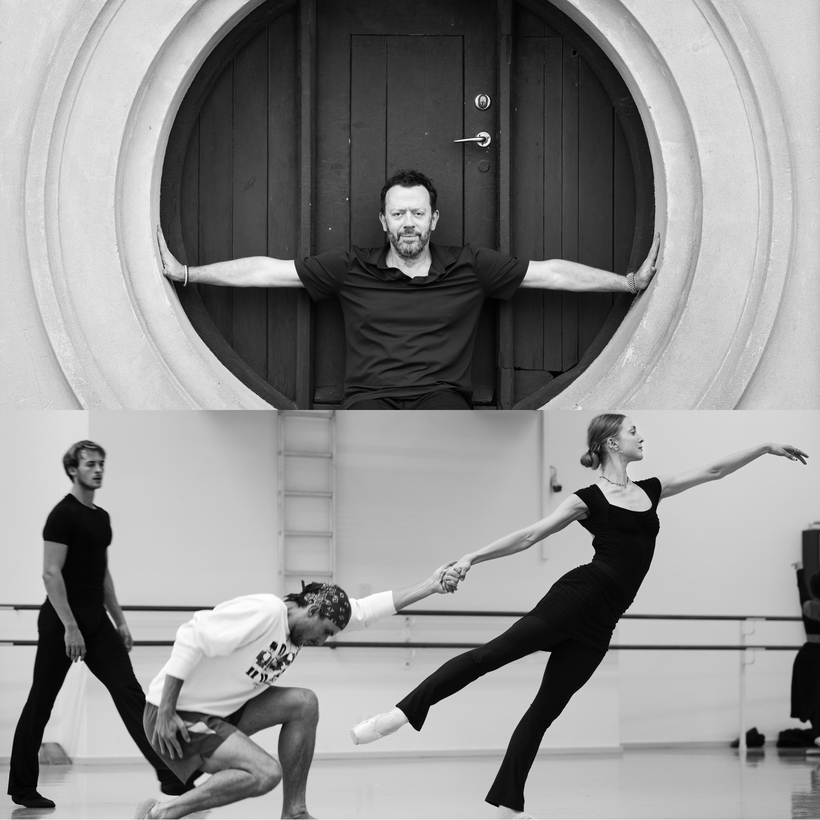Johann Sebastian Bach’s The Art of Fugue is a fiendish work of near-mythical status. Written during the last seven years of the master’s life, the unfinished composition—experimental and exploratory—is a challenge to those who dare. Is the revered score appropriate for a ballet?
It was attempted by Wayne McGregor in 2014—the ballet Tetractys—with little success. Next Saturday in Copenhagen, Alexei Ratmansky is unveiling a full-length ballet to the 70-minute work (plus intermission). As one dance friend said, “This is bloody high culture.”
Ratmansky’s ballet is billed as an “entirely abstract, almost cosmic ballet in five acts.” He has given little away, revealing to a Danish newspaper—his only interview on the subject—that he will plumb the depths of neoclassical ballet, much as Bach’s fugues explore the reaches of polyphony. Hubris?

He began working on the Bach in 2022 while at the helm of the Bolshoi Ballet, a position he left the day Russia invaded Ukraine. Ratmansky is Russian-born but Ukrainian-bred. He has since been making work at a frenetic pace for companies across Europe and the U.S. Next Saturday’s premiere with the Royal Danish Ballet is highly anticipated by balletomanes.
Published posthumously in 1751, Bach’s masterpiece is the apotheosis of the fugal form. A simple theme—three notes of a D-minor chord and a scale—is interrogated over 14 fugues and four canons. Though the theme is repeated and rehashed across multiple musical voices, each section maintains its independence and remains harmonious with the rest. Think of it as an exposition of the simplest building block, from which a monumental edifice is erected.
The challenge for Ratmansky is translating the pedagogical nature of the fugues, which were intended to be studied, into visually exciting imagery. Any wise choreographer is alive to the risks of a detached and literal interpretation of Bach’s complex music. George Balanchine created his 1941 masterpiece, Concerto Barocco, to Bach’s Concerto in D Minor for Two Violins. Full of fleeting visions of nature—birds flocking, the spiral of a chambered nautilus—his ballet wove the dancers’ bodies into the DNA strands of Baroque music.

In 1971, Jerome Robbins took on Bach’s Goldberg Variations, composed in 1742. He called the music “a beautiful marble wall” and said, “I wanted to see what would happen if I got hold of something that didn’t give me any easy finger ledge to climb.” Robbins made a ballet for New York City Ballet that lets the dancers be introspective and playful; he wanted to see Baroque musical architecture presented with a contemporary naturalism.
Amy Watson, the new artistic director of the Royal Danish Ballet, reminds us that “Alexei’s signature is his musicality.” She reveals that “there will be musicians onstage, and singers in the performance.” Watch for the role of the “Solo Man” (danced by on-the-rise Tobias Praetorius). “I can’t help but think that we are watching Alexei’s inner life unfold onstage,” says Watson. She throws down the gauntlet with an unequivocal proclamation: “It is going to be a monumental moment in ballet this century.”
The Art of Fugue will go on at the Royal Danish Theatre’s Old Stage from November 1 to 18
Genevieve Marks is a London-based dance writer and dramaturge


